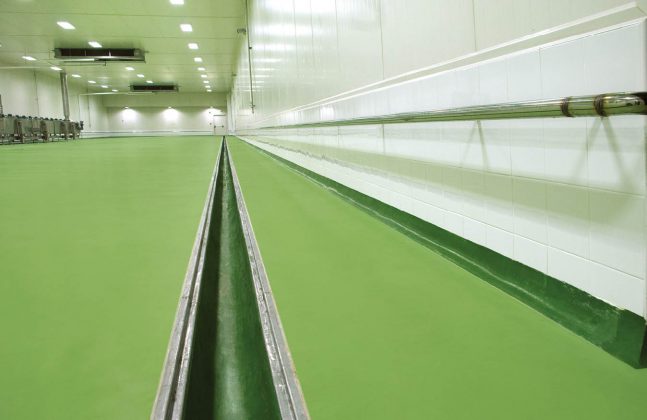When considering the design and layout of a food or beverage processing plant, many things should be kept in mind. Everything can affect the quality of the food products and play a vital role in the success of the plant as a whole. One of the most critical areas to pay particular attention to are the floors and drainage systems, as they can affect the hygiene of the plant. Installing the right type of floors and sanitary trench drains will minimize the potential for bacteria growth, which also reduces the concern of product contamination. Here are just a few considerations for choosing the best trench drains for your floor.
1. The Materials
When it comes to drainage systems for food and beverage plants, the materials used are a critical factor. Trench drains come in a wide variety of materials but not all of them are ideal for food and beverage plants, due to the wet conditions. The wrong material can lead to more bacterial growth which can, in turn, lead to severe contamination issues. Ideally, plant managers should be looking at sanitary trench drains that use FDA and USDA-approved food-grade stainless steel, which is resistant to bacteria growth.

FDA and USDA-approved food-grade stainless steel should be used to avoid bacterial growth
2. Going Grateless
Traditionally, food and beverage processing plants have relied on trench drains that require grates. While these grates prevent large items from obstructing the channel, they can also lead to injuries and add to the maintenance costs of the plant. Due to constant exposure to cleaning solutions, natural acids from foods, the heavy weight of machinery, and countless other factors, grates begin to weaken and break over time. This leads to additional costs as they need replacing, but it can also lead to worker injury if not taken care of quickly enough, which can lead to legal issues for the plant.
3. Ease of Cleaning
Aside from wanting to go with bacteria-resistant materials for a plant’s drainage system, it is also essential to consider the ease of cleaning. Traditional trench systems with grates require the grates to be removed and cleaned, along with the drainage channel itself. Newer sanitary trench drains like Slot Drain have no grates, making cleaning much more manageable with different possible methods. A Flush Flo system—which flushes water through the drainage channel—is recommended for food and beverage plants.

Ease of cleaning is a key consideration for the food and beverage industry
4. A Seamless Drainage Channel
Food and beverage plants want to ensure that their facility floor finishes are all seamless. Any cracks or spaces in the floors or drainage system’s channel create an environment for bacteria to become trapped and grow. This is especially dangerous since these facilities can work with wet materials, which can get splashed around by employees’ feet, and seep deeply into open areas, making it difficult to clean entirely. Slot Drain’s drainage systems come pre-assembled and welded in a way that there is no concern of liquids or other forms of material waste becoming trapped and creating harmful bacteria.
5. The Pitch of the Floors
For sanitary trench drains to work, floors of food and beverage plants need to have a specific pitch. This pitch will help to prevent standing water, by allowing any fluid waste to go towards the drains with the help of gravity. Traditional trench drains require additional support in this regard as they need to be sloped so that the water that gets collected is not left standing, which can also lead to bacteria growth. Alternatively, a Slot Drain system comes pre-sloped, meaning any liquid waste will automatically begin flowing into the collection chamber.

Pitch is needed to avoid standing water becoming a slip hazard
Food plant designers have many things to keep in mind when designing a new plant or renovating an existing one. Keeping the facility sanitary is one of the most critical factors as this can affect the reputation of the plant and lead to a vast array of issues if expectations are not met. The best place to start working on the sanitation of a food and beverage plant is by installing the right type of floors, and the right kind of sanitary trench drains to accompany them. The factors mentioned above are just a few of the most critical points to consider when choosing the right system for different facilities in the food and beverage industries.
1 thought on “How to Choose the Best Sanitary Drains for your Floors”
Comments are closed.






You make a good point how food industry grates need to be bacteria resistant. It’s good to know that stainless steel would then be the material of choice to accomplish that. I’ll definitely keep this in mind since my brother and I are thinking of starting up a restaurant together.